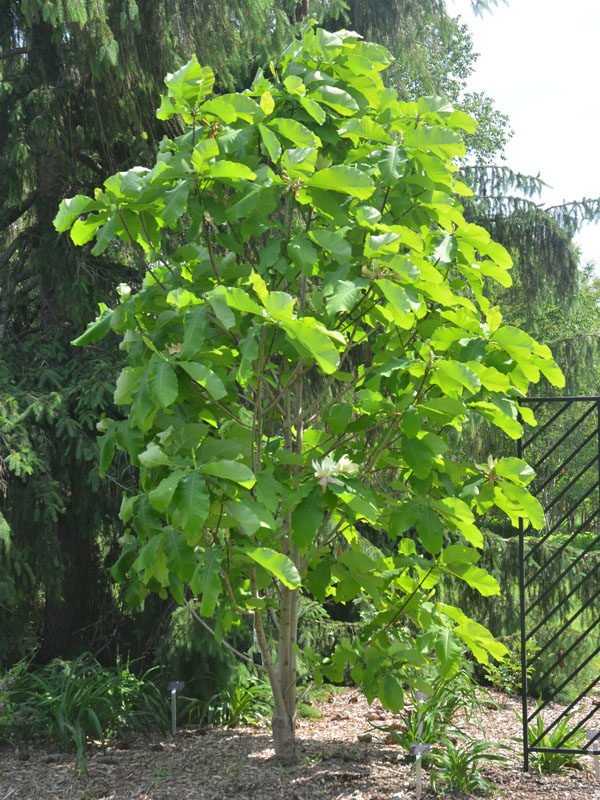
Woody > Magnolia > Magnolia obovata > Magnolia obovata
Magnolia obovata
Whitebark Magnolia, Japanese Bigleaf Magnolia
Origin: Native to Japan. The genus Magnolia is named after Pierre Magnol, a French botanist who lived from 1638 to 1715.
| Family |
| Magnoliaceae |
| Genus |
| Magnolia |
| Species |
| obovata |
| Category |
| Woody |
| Type |
| Tree (deciduous) |
| Synonyms |
| Magnolia hypoleuca |
| Pronunciation |
| USDA Hardiness Zone |
| 6 |
| Canadian Hardiness Zone |
| 5a - 6a |
| RHS Hardiness Zone |
| H6 |
| Temperature (°C) |
| -23 -(-18) |
| Temperature (°F) |
| -10 - 0 |
| Height |
| 12 - 20 m |
| Spread |
| 5 - 10 m |
Photographs
Description and Growing Information
Flowering Period
| Cultivation |
| Grows in well-drained, moist soil in full sun to partial shade. |
| Shape |
| Broadly pyramidal. |
| Growth |
| Medium |
| Pests |
| Horse chestnut scale, snails and capsid bug. |
| Leaf Description |
| The leaves are large, obovate, 16-38 cm long and 90-20 cm broad, leathery, green above, silvery or greyish pubescent below, and with an acute apex. They are held in whorls of five to eight at the end of each shoot. |
| Flower Description |
| The flowers are also large, cup-shaped, 15-20 cm diameter, with 9-12 creamy, fleshy tepals, red stamens; they have a strong scent, and are produced in early summer after the leaves expand. |
| Fruit Description |
| The fruit is an oblong-cylindric aggregate of follicles 12-20 cm long and 6 cm broad, bright pinkish red, each follicle containing one or two black seeds with a fleshy orange-red coating. |
| Notable Specimens |
| The A. M. Cuddy Gardens, Strathroy, Ontario, Canada, Westonbirt, The National Arboretum, Tetbury, Gloucestershire, England. |
| Propagation |
| By seed or softwood cuttings. |



